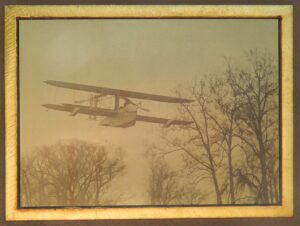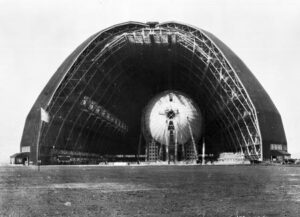, OH
For over 200 years, the Mentor Lagoons have had a major impact on northeastern Ohio and its people. Located on the site of a large estuary where the Grand River once flowed into Lake Erie, the area evolved into a large marsh. It was here in 1797 that Charles Parker, a member of Moses Cleaveland’s survey party, platted lands for the Connecticut Land Company and established the “Marsh Settlement,” the first in what later became Lake County. Throughout the twentieth century, attempts were made to commercially develop this natural treasure, the most recent occurring in 1996. The proposed destruction of the Mentor Lagoons’ pristine lakefront, upland forest and riverine marsh prompted Mentor voters to call for its preservation. For the first time in Ohio’s history, voters affirmed eminent domain action to protect open space. This led to the city’s acquisition of the 450-acre tract, now known as the Mentor Lagoons Nature Preserve & Marina.
, OH
An October 23, 1927, ceremony was held for the laying of the cornerstone for the Dennison High School Building. It opened in the fall of 1928 and was called “Angel’s Castle” in honor of school superintendent William Hiram Angel. The building was designed by J.K. Griffin, an architect from Canton, Ohio, in a style that has the elements of Collegiate Gothic that was popular for school and college buildings during the early twentieth century. The distinguishing architectural features of the entrance towers enhance the school’s prominent location above the street level. Dennison High School is an important visual landmark in the community, as its towers are visible from the downtown area and surrounding neighborhoods. It has retained its integrity of location, materials, design, and association and conveys the early twentieth century ideals of education that the original design of the building was intended to inspire. (Continued on other side)
, OH
After Wilbur Wright died in 1912, Orville Wright continued to develop and fly airplanes for the Wright Company. Orville flew seaplanes along this part of the Great Miami River from 1913 to 1914. This area had three advantages: deep water formed by a hydraulic dam, freedom from man-made obstructions, and a 90 degree bend in the river that allow him to take off and land either north-south or east-west, depending on prevailing winds. In June and July 1913, Orville made more than 100 flights, frequently with passengers, in the Wright Model C-H “hydroplane.” In 1913 and 1914, Orville and Wright Co. chief engineer Grover Loening developed the Wright Model G “aeroboat.”
, OH
Marion civic leaders Shauck Elah Barlow and Ida Harsh Barlow built “Waldheim,” their Colonial Revival residence, between 1903-1905. Ida Barlow, then president of the Marion Women’s Club, hosted a December 1905 meeting in her new home. Members discussed art, music, literature, and ideas for “civic improvement.” In 1909, this and other Marion clubs reorganized as the Marion County Federation of Women’s Clubs. Federation members soon organized into action: providing college loans to young women; sponsoring visiting city and later school nurses; purchasing trash receptacles; providing dental clinics for low-income residents; and funding railroad crossing safety equipment. Upon her death in 1945, Barlow bequeathed her house to the Federation as the “Women’s Club Home.” The new Federation headquarters offered meeting space for the Executive Board and the many associated clubs. (Continued on other side)
, OH
“The future doesn’t belong to the fainthearted; it belongs to the brave. The Challenger crew was pulling us into the future and we’ll continue to follow…” President Ronald Reagan
As the second American woman in space, Judith Resnik (1949-1986) paved the way for the future of women in space exploration. A gifted science and music student and valedictorian of Firestone High School’s class of 1966, she earned a doctorate in Electrical Engineering from the University of Maryland in 1977 and was accepted by the National Aeronautics and Space Administration (NASA) as an astronaut candidate in 1978. Her first flight was on the inaugural mission of the Space Shuttle Discovery in 1984. Resnik was aboard the Space Shuttle Challenger as a mission specialist on January 28, 1986, when it exploded just 73 seconds after lift-off from the Kennedy Space Center in Florida. All seven crewmembers died in the explosion.
, OH
Marion A. Harrison established M.A. Harrison Memorial Airfield, formerly Harrison Airport, in 1946 on land encompassing 80 acres. This facility served to promote aviation activities in the Birmingham community with flight charters, flight instruction, and rides. Birmingham Metal Products was located here during World War II producing fighter aircraft fuel parts, and the airfield was used to train civilian pilots. Today, it remains dedicated to flight.
, OH
A colossus of engineering acumen and structural steel, the Airdock was built in 1929 as the construction facility for the U.S. Navy’s rigid airships, the USS Akron (1931) and USS Macon (1933). The airships, or dirigibles, served as the fleet’s aerial watchdogs, but with the advancement of aircraft carriers, the Navy no longer needed these leviathans of the skies, which were large enough to carry five biplanes. Eleven steel parabolic arches, cresting at 211 feet, create one of the largest open space interiors in the world and shelter more than 364,000 square feet of floor space. Only one of the arches is fixed to its concrete piling. Its 660-ton spherical doors rest on flatbed railroad cars to open. The Airdock, a National Civil Engineering Landmark, was added to the National Register of Historic Places in 1973.
, OH
Lewis Albert Jackson (December 29, 1912-January 8, 1994) was an African American aviator remembered for training Tuskegee Airmen during World War II. As a teenager in Indiana, he began flight lessons and soloed in 1932, flying his own Waco 10. Jackson spent 1932-1937 barnstorming to save money for college while earning his Transport Pilot’s License. He re-rated to a Commercial License with Instructor Rating in 1939, and then completed advanced acrobatic training at Coffey School of Aeronautics. In late 1940, he was appointed Director of Training in the Army Air Force 66th Flight Training Detachment at Tuskegee Institute. After the war he moved to Ohio and served as an FAA Flight Examiner from 1947 to 1960. The Lewis A. Jackson Greene County Regional Airport was posthumously renamed to honor this true aviation pioneer.









